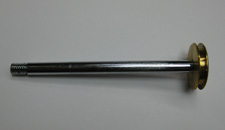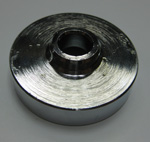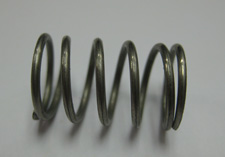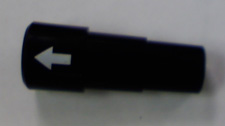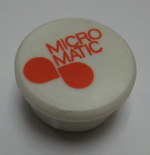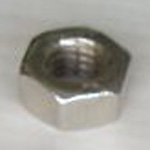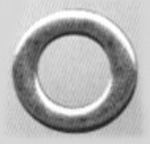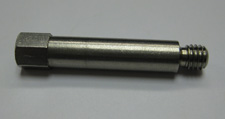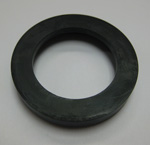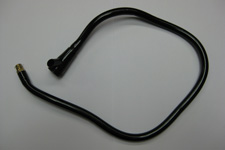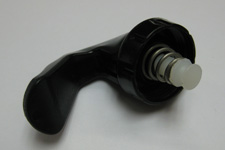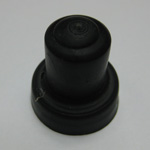Low-foam keg tap
From DDL Wiki
(→FMEA) |
(→Design Analysis) |
||
| Line 346: | Line 346: | ||
* DFE | * DFE | ||
| - | Our DFE conclusions from the tap design in use currently, showed that our group should work to reduce the amount of foam created. The foam was the largest component of greenhouse gas emissions associated with our product. Therefore reducing the foam created would be a great way to reduce the impact our product has on the environment. | + | Our DFE conclusions from the tap design in use currently, showed that our group should work to reduce the amount of foam created. The foam was the largest component of greenhouse gas emissions associated with our product. Therefore reducing the foam created would be a great way to reduce the impact our product has on the environment. [https://blackboard.andrew.cmu.edu/webapps/portal/frameset.jsp?tab=courses&url=/bin/common/course.pl?course_id=_584209_1 Keg tap] |
Due to the number and types of changes we have made to the original tap to create our foam-reducing tap, the DFE for our product would be identical to the original tap, with one major change: the amount of foam created by our product is less. The reduced foam creation in our tap means our product will have a reduced impact on the environment. | Due to the number and types of changes we have made to the original tap to create our foam-reducing tap, the DFE for our product would be identical to the original tap, with one major change: the amount of foam created by our product is less. The reduced foam creation in our tap means our product will have a reduced impact on the environment. | ||
Revision as of 13:08, 5 December 2009
Contents |
Executive Summary
Provide a brief executive summary summarizing your findings and conclusions. In particular, summarize
- Findings from market research justifying need for the new product: Survey distributed; found that users desire a lower foam output, easier pumping mechanism, and more intuitive tap design
- The product's main features, advantages over competitors, and target market: center cylinder redesigned to eliminate 90 degree bend in liquid output (straight tube means less foam), final product will include pressure gauge to prevent overpumping; competing products create more foam; target market is beer distributors and college students
- The most important findings from your product analyses that justify design choices and support your case for the new product.
Market Analysis
Make the case that there exists a market need for your product using market research findings, illustrative pictures, benchmarking against competitors, and identifying your target market. Estimate a ballpark expected price and production volume for the product and compare against expected cost. Determine if the product has high likelihood to be profitable or unprofitable or if more information is needed to determine. Is there enough potential to justify investment in further market research and testing?
Design Documentation
Include assembly drawings with all components labeled as well as a bill of materials defining each component with quantity, material, etc. Include a fully dimensioned CAD drawing for each custom component and a company and part number for each purchased component.
Whether or not the base is cast or bought depends on the production volume. As of now, the assumption is that the number of taps produced will not make it worth it to make the part. The individual component can be purchased at ____ for $xx.
House of Quality
Provide a complete house of quality table to summarize your design choices, targets, relationships, and benchmarking against the competition. Highlight major findings and conclusions.
- Finished, needs to be checked
Design Analysis
Report on conclusions and recommendations from your DFMA, FMEA, and DFE findings for your product, and benchmark against the competition. Highlight major findings in the report and provide data in the appendix.
- DFE
Our DFE conclusions from the tap design in use currently, showed that our group should work to reduce the amount of foam created. The foam was the largest component of greenhouse gas emissions associated with our product. Therefore reducing the foam created would be a great way to reduce the impact our product has on the environment. Keg tap
Due to the number and types of changes we have made to the original tap to create our foam-reducing tap, the DFE for our product would be identical to the original tap, with one major change: the amount of foam created by our product is less. The reduced foam creation in our tap means our product will have a reduced impact on the environment.
- FMEA
Mechanical Analysis
Clearly state the purpose of the analysis, methods and assumptions. Define all symbols, and provide a free body diagram, if applicable. Summarize conclusions and implications for you design, and explain how the analysis serves to justify your design choices.
Prototype Documentation
Document your final prototype, explain what it demonstrates about your design, and clearly identify differences between your prototype and final design intended for mass production. Summarize findings from user testing and user feedback.
Design Process
Include a short section documenting your team design process for scheduling, coordinating, and completing tasks. Identify individual team member roles, responsibilities, and contributions. Assess the state of the product. Is the design ready for production? If not, what are the next steps (eg. more testing, quantitative market research)?
Appendix
Include Design analysis data here.
